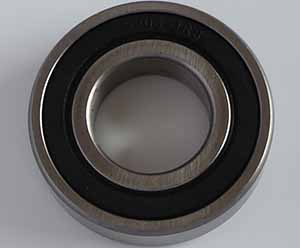
How to find bearing
1. Seek Expert Advice: If you’re unsure about which bearing would be best suited for your application, consider seeking advice from bearing specialists, engineers, or technical experts. They can offer valuable insights and recommendations based on their knowledge and experience, helping you make an informed decision.
2. Consider Application-Specific Requirements: Take into account any specific requirements or constraints of your application, such as temperature extremes, exposure to moisture or chemicals, vibration levels, or regulatory compliance. These factors may influence your choice of bearing type, material, and design features.
3. Consider Long-Term Support: When choosing a bearing supplier or manufacturer, consider factors beyond just the initial purchase, such as after-sales support, warranty coverage, and availability of spare parts. A supplier that offers reliable customer service and support can be invaluable in the event of technical issues or warranty claims.
4. Evaluate Reviews and Testimonials: Look for reviews and testimonials from other customers who have used the bearings you’re considering. Feedback from real-world users can provide valuable insights into the performance, durability, and reliability of the bearings in actual applications.
5. Stay Informed About Advances in Bearing Technology: The field of bearing technology is constantly evolving, with new materials, designs, and manufacturing techniques being developed to improve performance and reliability. Stay informed about the latest advances in bearing technology to ensure you’re leveraging the best solutions for your application.
6. Track Performance and Reliability: Once you’ve installed the bearings in your equipment or machinery, monitor their performance and reliability over time. Keep records of maintenance activities, replacement intervals, and any issues encountered, and use this information to inform future bearing selection decisions.
7. Plan for Maintenance and Replacement: Keep in mind that bearings are subject to wear and may require periodic maintenance or replacement over time. Factor in the cost and availability of replacement bearings, as well as the ease of maintenance, when selecting bearings for your application.
8. Explore Specialty Suppliers: Depending on your specific requirements, you may need to explore specialty bearing suppliers or manufacturers that specialize in niche applications or unique bearing designs. These suppliers may offer specialized expertise and custom solutions tailored to your needs.
9. Utilize Online Resources: Take advantage of online resources such as forums, discussion boards, and technical websites dedicated to bearings and related industries. Engaging with knowledgeable individuals and participating in discussions can provide valuable insights and recommendations for finding the right bearing for your application.
10. Evaluate Total Cost of Ownership: When comparing bearing options, consider the total cost of ownership over the entire lifecycle of the bearing, including initial purchase price, maintenance costs, downtime expenses, and potential savings from improved performance or longevity. Choosing a bearing with lower upfront costs may not always result in the most cost-effective solution in the long run.
11. Consider Future Expansion or Upgrades: Anticipate any future expansion or upgrades to your equipment or machinery that may impact bearing selection. Choosing bearings with compatible dimensions, performance characteristics, and interchangeability can facilitate future upgrades or modifications without the need for extensive redesign or replacement.
12. Attend Industry Events: Consider attending industry trade shows, exhibitions, or conferences where bearing manufacturers and suppliers showcase their products and innovations. These events provide opportunities to network with industry professionals, see the latest bearing technologies firsthand, and gather information to inform your purchasing decisions.
13. Seek Feedback from Peers and Colleagues: Reach out to peers, colleagues, or industry contacts who have experience with similar applications or bearing requirements. Their firsthand experiences and recommendations can provide valuable insights and help guide your decision-making process.
14. Document Requirements and Specifications: Keep detailed records of your application requirements, bearing specifications, and selection criteria to facilitate future reference and decision-making. Documenting your findings and decisions can help streamline the bearing selection process for future projects or applications.
NSAR, a professional deep groove ball bearings supplier in China, provides a broad variety of deep groove ball bearing with best customer service and quality assured. With more than 20 yearsdeep groove ball bearings manufacture experience, our deep groove ball bearing has been exported to United States, Canada, Mexico, Brazil, Argentina. you can products download,NSAR can satisfy your bulk deep groove ball bearing customization needs,We provide 6012 bearing and 6000 bearings series and 6200 bearings series and 6800 bearings and pillow block ball bearings and 6300 bearing.
Bearing Shields and Seals:
Skateboard bearings often come with shields or seals to protect the interior from dirt, dust, and moisture. Shields are typically non-contact metal plates that cover the sides of the bearing, while seals provide a tighter seal against contaminants but may create more friction. Some skateboarders prefer removable shields for easy cleaning and maintenance, while others opt for non-contact shields for reduced friction and increased speed.
Price and Brand Considerations:
Skateboard bearings are available at various price points, ranging from budget-friendly options to high-end bearings from well-known brands. While brand reputation can be a helpful indicator of quality and performance, it’s essential to consider factors like materials, construction, and user reviews when selecting bearings. Many reputable bearing brands offer a range of options to suit different budgets and preferences.
Customization and Upgrades:
Skateboarders often customize their bearings to suit their riding style and preferences. This may include upgrading to higher-quality bearings, experimenting with different materials or lubricants, or adding bearing spacers and speed rings for improved performance. Some skateboarders even customize their bearings with aftermarket components or modifications for a personalized riding experience.
DIY Maintenance and Repair:
Skateboard bearings can be relatively easy to maintain and repair with basic tools and supplies. Skateboarders often perform routine maintenance tasks like cleaning, lubricating, and replacing damaged bearings themselves, saving money on professional services. Many online tutorials and resources provide step-by-step guides for DIY bearing maintenance and repair.
By incorporating these additional steps into your bearing search process, you can enhance your ability to find the right bearing for your specific needs, ensuring optimal performance, reliability, and compatibility with your application requirements.

